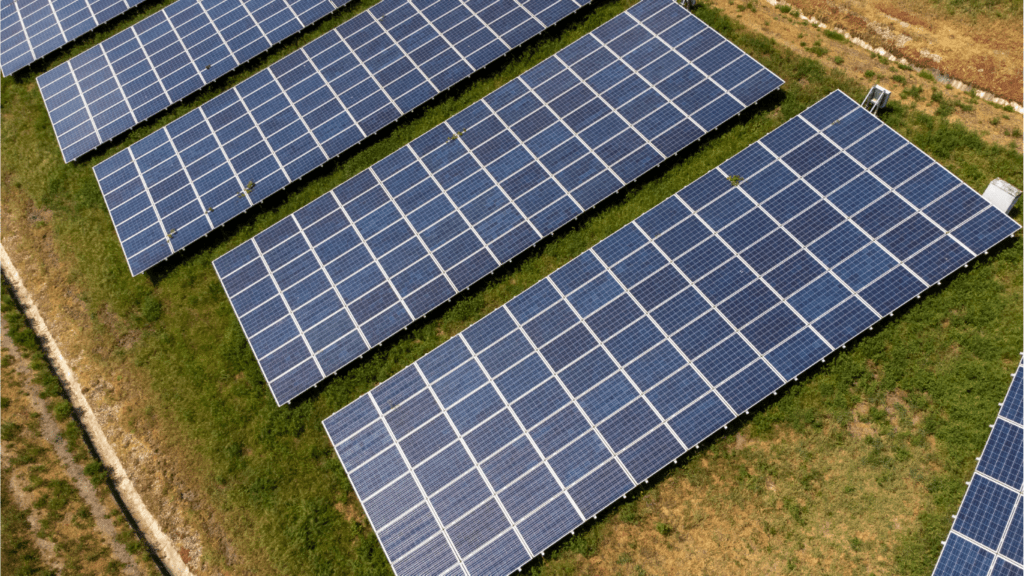Understanding Renewable Energy Fundamentals
The Importance of Renewable Energy
Renewable energy plays a crucial role in addressing climate change.Transitioning to renewable sources reduces greenhouse gas emissions and dependency on fossil fuels.
This shift leads to improved air quality and public health. Renewable energy sources like solar and wind offer sustainable alternatives, minimizing environmental impact.
Economic benefits also arise from renewable energy. Job creation in manufacturing, installation, and maintenance sectors boosts local economies. Innovations in renewable technologies attract investment and foster economic growth.
Ensuring energy security, renewable sources diversify energy supply, reducing vulnerability to price fluctuations and geopolitical tensions.
Types of Renewable Energy Sources
1. Solar Energy
Solar energy harnesses sunlight using photovoltaic cells or solar thermal systems.
- Photovoltaic cells convert sunlight directly into electricity.
- Solar thermal systems use sunlight to generate heat, which produces electricity through a steam turbine.
These systems excel in areas with high solar insolation.
2. Wind Energy
Wind turbines capture kinetic energy from wind and convert it into electricity. Onshore and offshore wind farms offer significant power generation potential.
Technological advancements have increased turbine efficiency and reduced costs. Wind power’s scalability makes it viable for both large-scale and community-based projects.
3. Hydropower
Hydropower uses flowing water to generate electricity. Dams and reservoirs store water, releasing it through turbines to produce power. This source provides consistent and reliable energy.
Hydropower plants also offer flood control and water supply benefits.
4. Biomass Energy
Biomass energy derives from organic materials like plants and animal waste. It converts these materials into electricity, heat, or biofuels through combustion or biochemical processes.
Biomass energy provides a renewable alternative for heat and power generation, particularly in areas with abundant agricultural resources.
5. Geothermal Energy
Geothermal energy utilizes heat from the Earth’s core. It involves extracting steam or hot water from underground reservoirs to drive turbines and generate electricity.
This source offers consistent, baseload energy with minimal environmental impact. Geothermal systems suit regions with significant tectonic activity.
By diversifying our energy mix with these renewable sources, we can create a more resilient, sustainable, and environmentally friendly energy system.
Current Innovations in Solar Power
Advances in Photovoltaic Materials
Photovoltaic (PV) materials convert sunlight directly into electricity. Recent innovations in this field enhance efficiency and reduce costs, driving solar power adoption.
Perovskite solar cells, for instance, show remarkable efficiency. According to the National Renewable Energy Laboratory (NREL), perovskite cells reach efficiencies exceeding 25%.
Their low-cost production makes them promising alternatives to traditional silicon-based cells. Another innovation involves bifacial solar panels, which capture sunlight from both sides.
This design results in increased energy production. Oxford PV, a leader in this area, integrates perovskite layers with silicon, pushing tandem cell efficiencies beyond 29%.
Solar Energy Storage Solutions
Energy storage is crucial for managing solar power generated during peak sunlight hours. Innovations in this area include advanced battery technologies and thermal storage systems.
Lithium-ion batteries dominate the market, but solid-state batteries offer higher energy densities and longer lifespans.
Research from MIT indicates that solid-state batteries could double energy capacity compared to lithium-ion batteries. Flow batteries are also emerging as a viable solution for large-scale storage. For example, the Vanadium Redox Flow Battery (VRFB) offers scalability and long-term storage capabilities.
Additionally, thermal storage systems using molten salt store excess solar energy as heat, which can later convert to electricity. This method is efficient for utility-scale implementations.
Breakthroughs in Wind Energy Technology

Enhancements in Turbine Design
Advancements in turbine design have significantly increased the efficiency of wind energy production.
Modern turbines feature larger blades and optimized aerodynamics, which maximize energy capture even at lower wind speeds. For example, Siemens Gamesa’s SG 14-222 DD turbine boasts a rotor diameter of 222 meters, increasing annual energy production.
Additionally, smart sensors and IoT integration enable real-time monitoring and predictive maintenance, reducing downtime and operational costs.
Active blade pitch control systems further enhance performance by adjusting blade angles in response to wind conditions, ensuring optimal energy conversion.
Offshore Wind Energy Developments
Offshore wind energy offers immense potential due to stronger and more consistent wind speeds over oceans. Recent innovations include floating wind turbines, which can be deployed in deep waters where traditional fixed-bottom turbines are impractical.
The Hywind Scotland project, for instance, has achieved a capacity factor of over 50%, demonstrating high efficiency. Advances in subsea cable technology have also enabled more efficient energy transmission from offshore farms to onshore grids.
Moreover, specialized vessels streamline installation and maintenance processes, significantly lowering costs.
Emerging Trends in Hydroelectric Power
Small-Scale Hydro Systems
Small-Scale Hydro Systems, which includes:
- Micro
- Mini hydropower plants
They are gaining traction due to their adaptability and low environmental impact.
Unlike large dams, small-scale systems divert only a part of the river flow, reducing the ecological footprint. These systems can supply electricity to remote areas unattached to major grids.
For instance, the Nepal Micro-Hydro Program, initiated in the 1990s, has electrified over 1,500 villages using small-scale hydro systems. This demonstrates a practical application of renewable energy in off-grid locations.
Environmental Impact Reductions
Innovations reduce the environmental impact of hydroelectric power, making it more sustainable. Fish-friendly turbines, which minimize harm to aquatic life, are an example of such innovation.
The Alden turbine, a development by the Electric Power Research Institute (EPRI), enhances fish survival rates to over 98%.
Additionally, variable-speed generators, when integrated with modern hydroelectric facilities, help optimize energy production while maintaining water flow conditions conducive to ecosystem balance.
These advancements ensure hydroelectric power remains a key player in the renewable energy landscape with minimal environmental disruption.
Cutting-Edge Bioenergy Solutions
Innovations in Biofuel Production
Researchers are transforming the biofuel landscape with pioneering technologies. Algae-based biofuels, known for their high yield and low land use, are becoming more viable due to advances in genetic engineering.
I saw studies from the National Renewable Energy Laboratory indicating that modified algae strains can now produce lipids more efficiently, reducing production costs.
Another groundbreaking development involves lignocellulosic biofuels. These biofuels come from non-food plant materials like agricultural residues and forestry waste.
The U.S. Department of Energy has reported that using enzymes to break down these materials can significantly increase biofuel yield. This innovation makes it easier to convert leftover biomass into usable energy.
Waste-to-Energy Technologies
Waste-to-energy technologies are revolutionizing how we manage waste and generate power. Anaerobic digestion is leading the charge by converting organic waste into biogas.
Municipalities are increasingly adopting this technology, with more than 250 anaerobic digestion facilities in the United States alone as per the Environmental Protection Agency (EPA).
The biogas produced is used to generate electricity and heat, making waste management more sustainable.
Gasification is another cutting-edge method. It converts carbon-based materials into synthetic gas (syngas) through high-temperature processing.
This syngas can then fuel power plants or create chemical feedstocks. I learned that the California Energy Commission has supported several gasification projects, reducing landfill waste while producing clean energy.
These innovations make bioenergy a versatile and sustainable energy source, contributing significantly to a cleaner future.
Future Outlook for Renewable Energy Innovations
Integration of AI and Machine Learning
AI and machine learning are reshaping renewable energy management. These technologies enhance the efficiency of energy production and reduce wastage.
Predictive maintenance algorithms, for example, can foresee equipment failures, optimizing operational uptime and costs.
Smart grids, which use AI systems, distribute energy effectively based on real-time demand and supply metrics.
Energy forecasting models use machine learning to predict weather patterns and energy consumption, aiding in more efficient energy distribution.
For instance, Google’s DeepMind optimized wind turbine output by 20% through machine learning.
AI streamlines microgrid operations, which integrate various renewable sources like solar and wind, increasing overall system efficiency.
Potential for Global Impact
Renewable energy innovations have a transformative potential on a global scale. Nations are progressively adopting cleaner technologies to meet environmental targets.
According to the International Renewable Energy Agency (IRENA), renewable energy could generate 80% of global electricity needs by 2050.
Economically, these advancements lower energy costs and create jobs. For instance, the solar industry employs over 3 million people worldwide.
Energy storage solutions like advanced batteries enable more reliable and consistent renewable energy supply, combating intermittency challenges.
These innovations contribute significantly to reducing greenhouse gas emissions, a crucial step in combating climate change.
Adopting renewable technologies at a larger scale can lead to a drastic reduction in fossil fuel dependency, fostering a sustainable energy future.


 Alice McClurg - Content Director Alice McClurg leads the editorial team as Content Director at Jackpot Journey Spot. With a keen eye for emerging trends and a deep understanding of the gambling landscape, Alice curates in-depth articles, event highlights, and game overviews. Her expertise helps guide readers through the ever-evolving world of gambling, ensuring they stay informed and entertained.
Alice McClurg - Content Director Alice McClurg leads the editorial team as Content Director at Jackpot Journey Spot. With a keen eye for emerging trends and a deep understanding of the gambling landscape, Alice curates in-depth articles, event highlights, and game overviews. Her expertise helps guide readers through the ever-evolving world of gambling, ensuring they stay informed and entertained.
